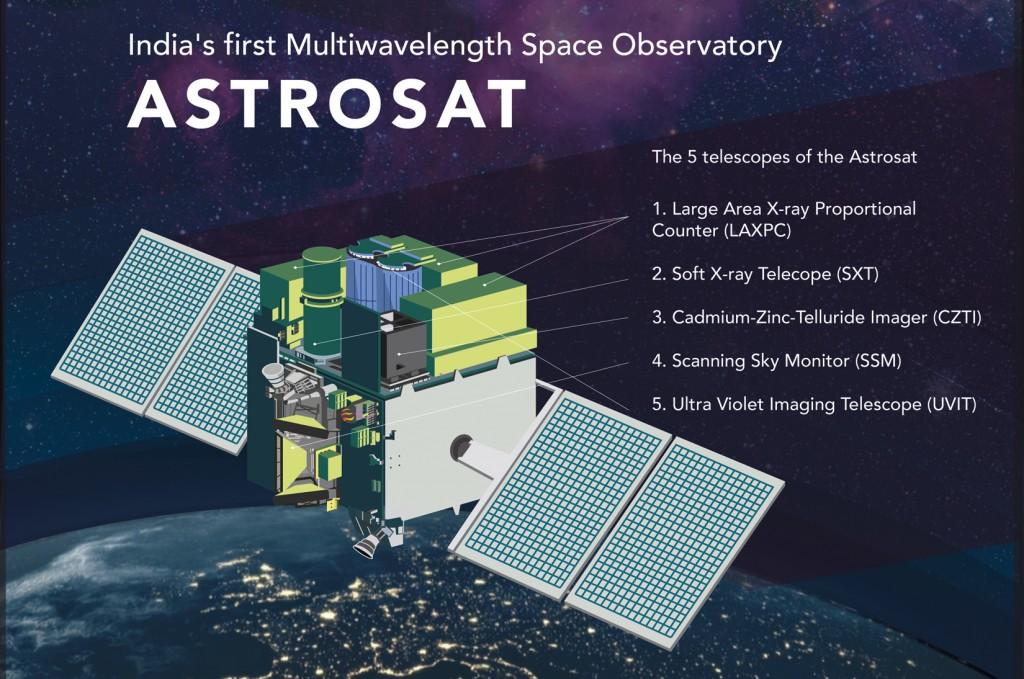Updated By: LatestGKGS Desk
AstroSat first dedicated multi-wavelength space observatory features, objective

India's first dedicated multi-wavelength space observatory AstroSat feature and objective
AstroSat is India's first dedicated multi-wavelength space observatory, was launched by Indian Space Research Organization (ISRO) on a Polar Satellite Launcher Vehicle (rocket) on 28 September 2015.
The 1513 kg space observatory built at a cost of Rs 180 crore has five scientific instruments to study celestial objects in the universe for the first time at optical, ultraviolet and x-ray wavebands simultaneously.
The instruments are a soft x-ray telescope, an ultraviolet imaging telescope, an image and a scanning sky monitor.
Instruments used by scientist to measure X-ray polarization
Indian scientists used the data from the CZT Imager (CZTI) which is made of a semiconductor called Cadmium Zinc Telluride.
It consists of 16384 tiny essentially independent detectors to measure X-rays coming from the celestial objects.
As get the micro-second accuracy for combining the data, the AstroSat team utilized one of the world's best radio telescope, the Indian Giant Meter-wave radio telescope (GMRT) at Khadad near Pune.